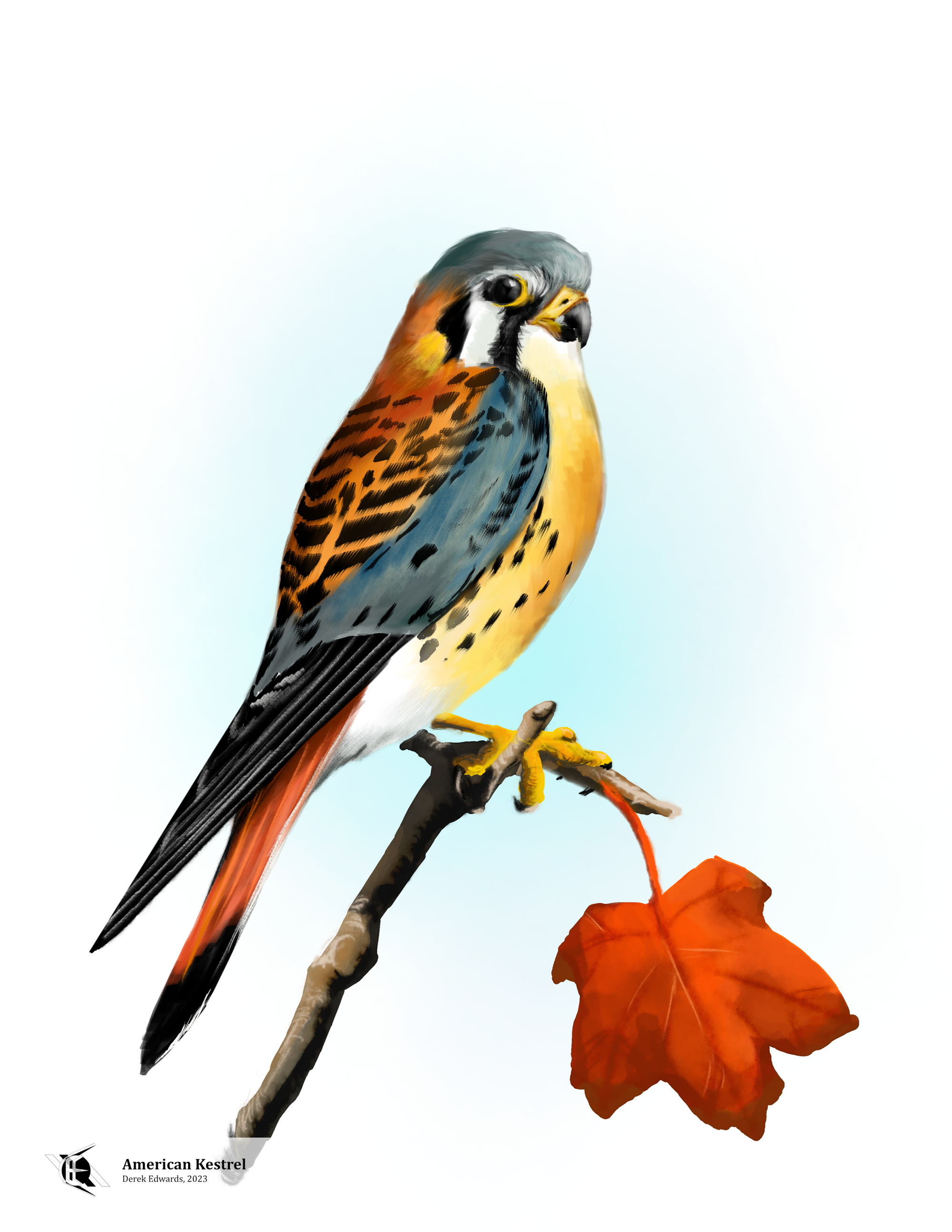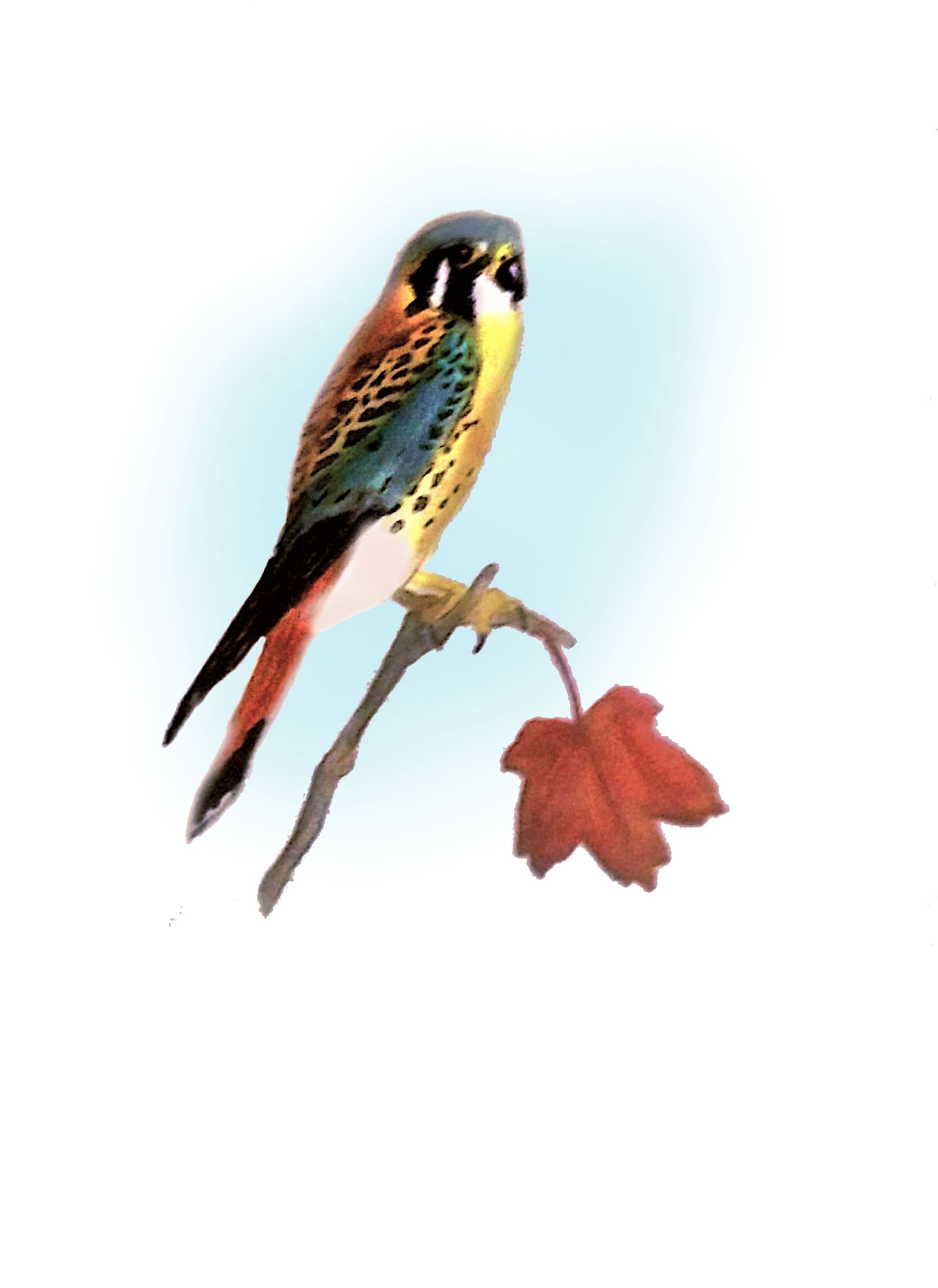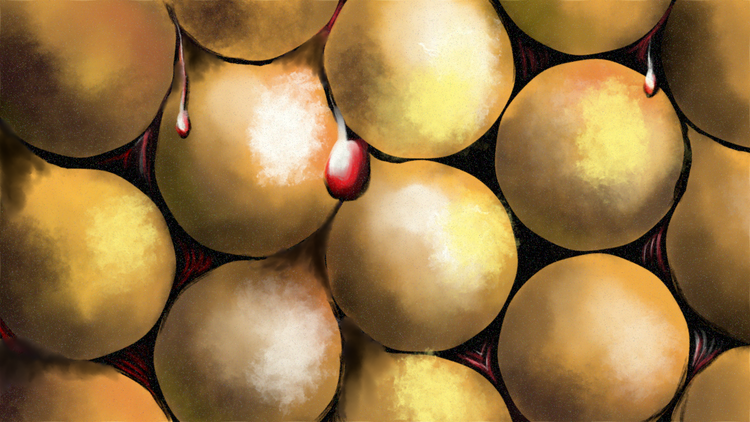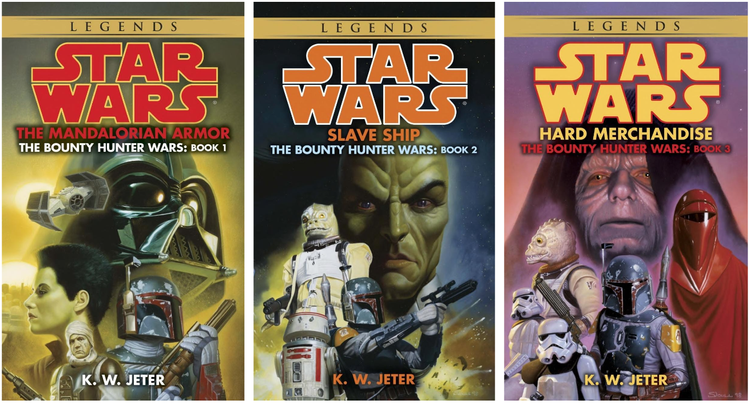
Running Commentary 3/6/2023
Hello,
There's a lot in this newsletter already, so I'm gonna put off talking about Warframe until next week.
Anyway...
Watching...

The Mandalorian
Season 3 of Star Wars's current flagship property brings us back into the byzantine life of Din Djarin. Here are my notes:
- Season 1 started with a set-up for the characters and the show, while still telling some story. Season 2 started with a very stand-alone episode (still, I'd say, the beast episode of the series). Season 3 starts with pure set-up. I was talking with someone about the premiere Thursday morning, who nailed what this felt like: this was like the beginning of a video game where you walk into the hub town and get handed a bunch of semi-related missions. Mando has his main quest: get into the mines of Mandalore and bathe in the waters. He should probably get a droid to help explore, and he only trusts the one droid, so he goes to get it. It needs repair, he can't repair it, and the experts need a part, etc. It's side-quest logic. Bounty hunting may be a complicated profession, but bounty hunter's personal days seem worse.
- I feel like for this season, so long as Djarin isn't in good standing, they oughta change the title screen a bit, like how they dropped the "MD" from House, MD that season he was in prison and lost his license. I'm not really sure what they'd change it to, though.
- I've hear a lot of complaints that this season doesn't make sense unless you've seen The Book of Boba Fett, specifically the episodes that focussed entirely on Djarin and Grogu wherein both came to the conclusion that they miss each other and reunite. On the one hand, I kind of agree that the important parts of shows should actually be parts of those shows, not of other shows. On the other hand, they're both on Disney+. If you can watch The Mandalorian, you can watch The Book of Boba Fett just as easily. Boba even showed up last season, and the Season 2 finale literally ended with a BoBF teaser. LucasFilm pretty clearly considers the two to be essentially two parts of the same whole, sort of like the CW did with all those superhero shows that had constant crossovers. Differences in quality aside, I don't think it's entirely unreasonable to expect fans to have watched both shows. It's awkward the way it's worked out, but it's not a huge problem.
- With Grogu back, there's a bit of a sense of "what now?" to his character. Sure, he's still a cute screen presence, using the Force to spin in a chair and getting into antics with the Azzerelins. But the story this season won't be centered around him. I did like how they showed Djarin now actually teaching Grogu the ways of Mandalorians.
- People who liked Andor but wished it had more creature effects are in for a treat here. The aliens all looked great, especially the lead pirate lieutenant, Vane, who's the best-looking Nikto we've seen on screen to date. The Pirate King Gorian Shard was an interesting design; he reminded me of the Neti from Legends. Between this and Shadow of the Sith, Star Wars sure has been Veitch-y lately.

BattleBots
- WITCH DOCTOR v GRUFF - Gruff did its best here but Witch Doctor just never let up the hits. Gruff did admirably in not getting too torn up by Witch Doctor's weapon. (This was the YouTube fight of the week.)

- MALICE v VALKYRIE - This fight was between two robots I always kind of group together under "bots that might win but probably won't". I wound up right, as Malice lost, then challenged the judge's decision, then Valkyrie lost. It was a close match, and not in a good way.
- MADCATTER v BIG DILL - Big Dill gave Madcatter everything it had at the beginning of the fight; unfortunately for them, Madcatter survived and was able to score more points with the judges by the time the three minutes were up. I've gotta say, as much as Claw Viper or Huge is probably the most improved bot this year, Big Dill is also doing a lot better than it has.
- JACKPOT v RIBBOT - Ribbot, on the other hand, isn't doing nearly as well as it has in the past. Up against Jackpot, they lost both wheels on their right side and spent the rest of the fight taking direct hits.
- SAWBLAZE v SKORPIOS - The most baffling moment of the night came when Skorpios replaced their hammersaw with a sheet-metal pirate sword. It was apparently an attempt to reach the drive belts on Sawblaze's hammersaw, but it didn't work. Sawblaze, who, in my book, already had a slight advantage in this fight, won handily.
- RIPPERONI v HIJINX - Again we saw that when Ripperoni's flywheel system works, the whole bot works pretty well. They disabled Hijinx's bar spinner quickly, and then proceeded to mangle Hijinx's whole frame pretty severely.
- END GAME v HYPERSHOCK - End Game's success comes from a good build and an aggressive fork game, sure, but this fight really showed the benefits of their defensive driving style. Hypershock was consistently denied the opportunity to hit Endgame, and wound up taking strikes until they got really unlucky and were stranded sideways. I was really rooting for Hypershock here, but better bots have lost more decisively to End Game.

The Bad Batch
It's time for science in the latest episode, setting up some potential new long-term villains. Here are my notes:
- Zillo beast? Now that's a name I've heard in a long time. Seriously, it's been thirteen years since Clone Wars did their Godzilla pastiche that ended on a weird scene of Palpatine commissioning a secret project to clone it. This episode is the first bit of follow-up since then. In Star Wars circles, "Zillo Beast" has become a sort of punchline for jokes about LucasFilm forgetfulness. But here it is again.
- Add Jimmi Simpson to the List. I wonder if his character will be filling in for Rampart as the show's running antagonist. I think Bad Batch vs Tantiss could be a good direction for the show, if that's what they're planning to take.
Reading...
On Animals

I know I've mentioned that some of the books I've read have been adapted from magazine articles that the authors had written previously. This book is not one of those; this book is simply an anthology collecting magazine articles directly into a single volume. Susan Orlean is a veteran magazine writer, and an animal lover, and her book On Animals gathers a dozen or so of her animal-related articles, mostly originally published in The New Yorker, I suppose my quick review is that every piece featured would be a good candidate for the RC curation links. (In fact, I half-want to find the links and feature them anyway; I probably won't, if only because I already have a backlog of non-fiction to get through.)
Orlean writes a fair bit about animals in her own life: childhood pets, along with the poultry and cats she and her husband kept living in outstate New York. But she also writes about the animals in others' lives: tigers kept by a lady in rural New Jersey, the continued use of pack donkeys in Fez, the resurgent use of plow-oxen in Cuba, and the strange partly-pet/partly-livestock world of domesticated rabbits. Each chapter is engagingly written, and Orlean's interest in animals shines through.
I do have some complaints: Orlean never gets especially in-depth about anything, which is understandable, in that she isn't writing anything really educational, just divertingly interesting magazine stories, but they come off a bit lightweight at times when read as a book. There's also the fact that a lot of these stories are decades old; the only update written for this edition was to Orlean's own journal of chicken-keeping. Some passages in the other pieces stood out as being out-of-date. There is, at one point, speculation about cell phone towers perhaps affecting the navigation of traveling birds, which I just happen to know has been investigated since and found not to be a serious problem. (The notion that birds have a compass in their brains or somehow are able to detect their global position using lines in the Earth's magnetic field was a pop-science factoid for a bit, but is more-or-less debunked now.) There's also the story of Keiko, the orca star of Free Willy who was himself released from captivity after an activist movement led by fans of the film. Orlean traces his life story, ending her piece on a hopeful note with Kieko's release into the North Sea. Sadly, Kieko died soon after his release, that is, soon after Orlean's piece was originally published. His death does undercut Orlean's piece, but that is how his story ended and omitting some sort of note on a re-publishing feels somewhat dishonest.
Overall, I enjoyed reading this book. I will say that I get it through my public library, and I'm not sure how much I'd say it's worth buying your own copy just to read the stories in it, especially if you already have access to The New Yorker, where all but a few chapters could be read. It's not really a book I'd see myself coming back to. But, again, it was quite well-written, and I'll probably look into some of Orlean's other work in the future.

Bird of the Week
This week, we have a falcon for the first time. We've had birds of prey before, and, once, most of those would have been considered falcons, or at least members of the falcon order. Today, the differences between hawks and falcons are more clear, with the hawks, eagles, etc. having been spun off into their own order, leaving the falcons behind along with their larger cousins, the caracaras. Falcons are more closely related to parrots and songbirds than to other raptors, but they do closely resemble hawks in both appearance and behavior. The key differences to look for are wing shape – falcons have thin, pointed wings that grant them greater nimbleness in the air, while hawks and eagles have broader wings that provide greater lifting power – and how they strike their prey. Hawks and eagles, when they fall upon some fish or small mammal that they wish to eat, grasp said creature in their powerful talons. The same is true of owls, in fact. Falcons strike not with their feet but with their beak, using a sharp notch in the edge of their beaks to sever the spinal cords of their quarry. Many, but not all, falcons also sport a stripe running from the front corner of their eyes down across their cheeks, as can be seen in this week's bird, the American Kestrel.
American kestrels, also known as "sparrowhawks" (though unrelated to the true sparrowhawk of Europe) are small falcons, being only a bit larger than robins and being much smaller than other raptors found in the United States. They feed on small animals (indeed, including sparrows) as well as large insects. As is the case with most raptors, male kestrels are smaller than females. More uniquely the two sexes actually have appreciable differences in plumage as well: the wings of males are a bluish-gray, while those of females are the same rufous brown as their backs. American kestrels are the most numerous falcons in the Western Hemisphere. They can be found throughout the Americas, though a lack of trees suitable for nesting keeps them out of northern Canada and Alaska, and a lack of open areas in which to feed keeps them out of the Amazon Basin and other dense forests.
The term "kestrel" derives from an Old French word possibly related to the French word for a rattle, "cresserele", perhaps due to kestrel's chittering vocalizations. There are 17 falcons called "kestrel", 16 of which live in the Eastern Hemisphere. The kestrels are united by their small size and their strange method of hunting: kestrels will soar less than a hundred feet above an open area, flying into a headwind such that they are able to hang still in mid-air. From this aerial perch, they will watch for prey on the ground, swooping down once some tasty creature shows itself.
American kestrels are well-studied birds, both in the wild and in captivity. Their small size and quick breeding make them ideal laboratory specimens. Studies of kestrels informed understanding of the effects of pesticides bio-accumulating in birds of prey, whose eggshells can be weakened when they ingest such chemicals in the form of their prey, which in turn ate poisoned insects.
The American Kestrel goes by a variety of names throughout its range. In parts of the U. S. it is still called the sparrowhawk. In Argentina, Paraguay, and Uruguay, it is halconcito colorado, the "colorful little falcon". Much of the rest of the Spanish-speaking world call it cernícalo americano, with "cernícalo" being the Spanish world for "kestrel" and deriving from a Latin word meaning "screen" or "sieve", though I'm not sure what logic that etymology follows. To science, the bird is Falco sparverius. "Falco" is related to the Latin word for scythe, a reference to the birds' curved talons, and is the source of the English word "falcon". "Sparverius" is the Latin name for the Eurasian sparrowhawk, though not a part of that bird's scientific name.

A note about my drawing: this is a re-do of a drawing I made 10 years ago. The original won a local youth art contest. That was right around when I was getting really serious about drawing birds, and at the time it was one of the best drawings I had ever done. I re-drew it for two reasons: (1) because I had my winning entry framed, and the only "scan" I have of it is a photo taken through the glass, and (2) because I wanted a direct comparison to see how I've improved in the last decade.
My assessment: going digital has helped in getting color and detail right, and practice has made the structure and anatomy more true-to-life, and I still can't do bird's feet very well.
Curation Links
How OXO Conquered the Kitchen | Dan Kois, Slate
“If you’ve ever stocked a first apartment’s kitchen, or searched the internet for the perfect measuring cup, or asked a friend “Why is your ice-cream scoop better than mine?,” you know OXO. Founded in 1990, it was the brainchild of a housewares mogul who was inspired to create a new kind of product (legend has it) by the struggles of his arthritic wife to peel an apple. OXO brought universal design into the mainstream”
Albert Millican’s Travels and Adventures of an Orchid Hunter (1891) | Hunter Dukes, The Public Domain Review
"Between 1887 and 1891, Millican made five trips to the orchid-rich areas of South America, concentrating on the Northern Andes. This was an era of orchidelirium, when a single rare specimen could fetch around $25,000 in today's money. Prospectors shipped millions of orchid bulbs to Europe and less than one-percent survived the journey."
The DIY Scientist, the Olympian, and the Mutated Gene | David Epstein, ProPublica
The story of a woman with a rare form of muscular dystrophy with a theory that her condition and the heavy musculature of an Olympic athlete both sprang from the same genetic condition. The writer, the author of a book, The Sports Gene, was contacted by the woman and discovered that she had put more research into the subject than most doctors, and that she was essentially correct.
Evenveil | Sam Balcomb, Short of the Week
[FICTION] [VIDEO] A high-fantasy concept film filled with stunning visuals. “A warrior in exile, bearing a fated weapon, enters the ruins of a dead city to unlock a mysterious power known as the Red Viel.”
See the full archive of curations on Notion







Member Commentary